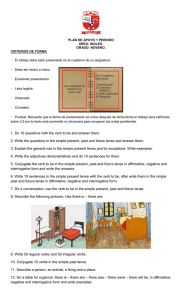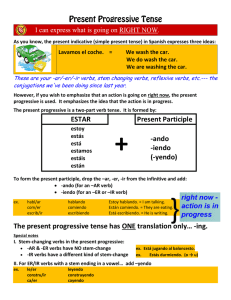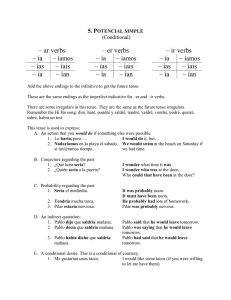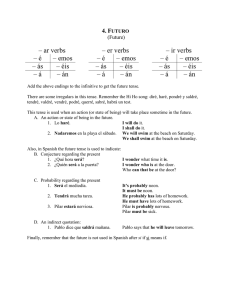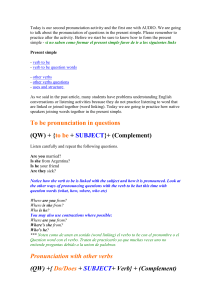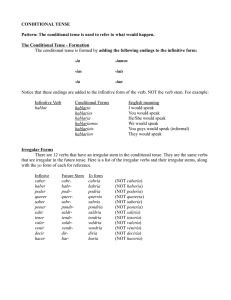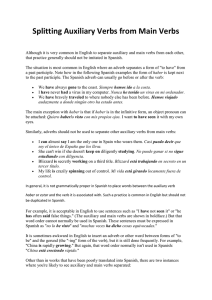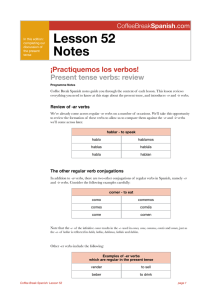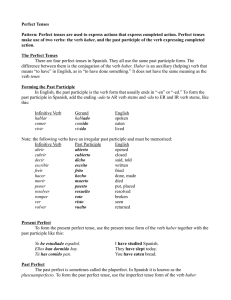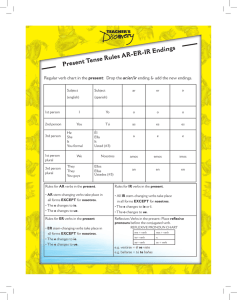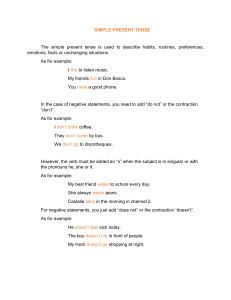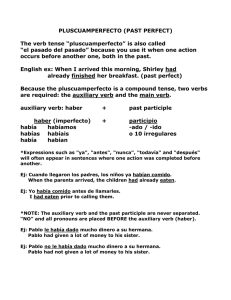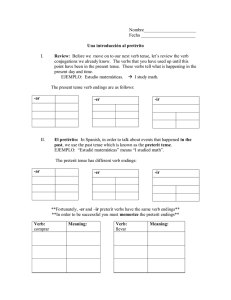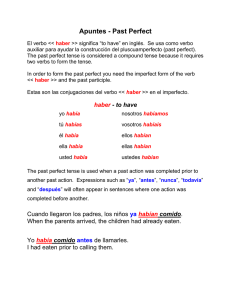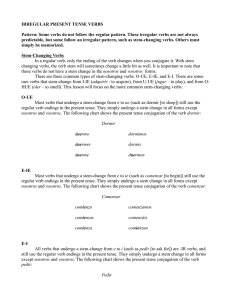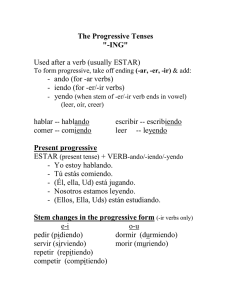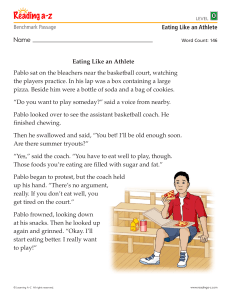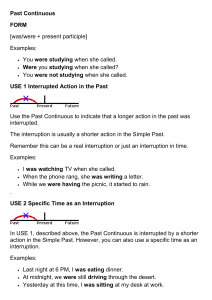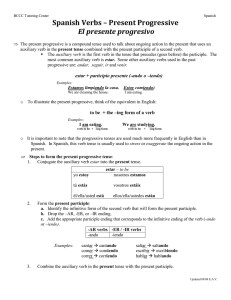haber he hemos has habéis ha han -ar verbs - ado -er verbs – ido
Anuncio
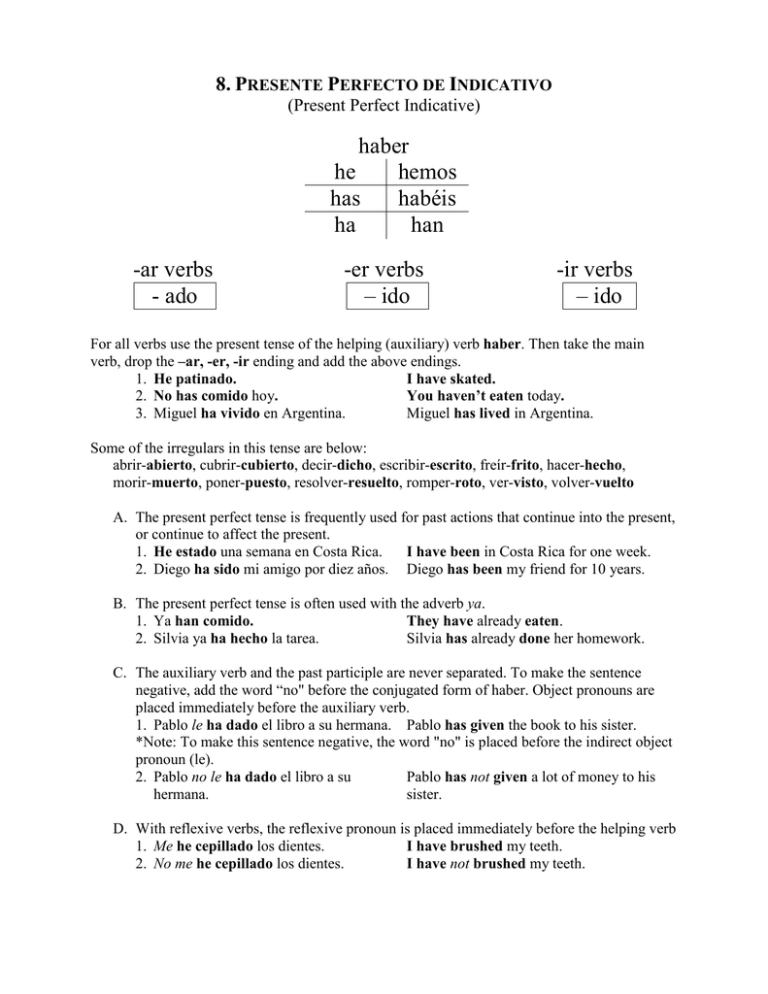
8. PRESENTE PERFECTO DE INDICATIVO (Present Perfect Indicative) haber he hemos has habéis ha han -ar verbs - ado -er verbs – ido -ir verbs – ido For all verbs use the present tense of the helping (auxiliary) verb haber. Then take the main verb, drop the –ar, -er, -ir ending and add the above endings. 1. He patinado. I have skated. 2. No has comido hoy. You haven’t eaten today. 3. Miguel ha vivido en Argentina. Miguel has lived in Argentina. Some of the irregulars in this tense are below: abrir-abierto, cubrir-cubierto, decir-dicho, escribir-escrito, freír-frito, hacer-hecho, morir-muerto, poner-puesto, resolver-resuelto, romper-roto, ver-visto, volver-vuelto A. The present perfect tense is frequently used for past actions that continue into the present, or continue to affect the present. 1. He estado una semana en Costa Rica. I have been in Costa Rica for one week. 2. Diego ha sido mi amigo por diez años. Diego has been my friend for 10 years. B. The present perfect tense is often used with the adverb ya. 1. Ya han comido. They have already eaten. 2. Silvia ya ha hecho la tarea. Silvia has already done her homework. C. The auxiliary verb and the past participle are never separated. To make the sentence negative, add the word “no" before the conjugated form of haber. Object pronouns are placed immediately before the auxiliary verb. 1. Pablo le ha dado el libro a su hermana. Pablo has given the book to his sister. *Note: To make this sentence negative, the word "no" is placed before the indirect object pronoun (le). 2. Pablo no le ha dado el libro a su Pablo has not given a lot of money to his hermana. sister. D. With reflexive verbs, the reflexive pronoun is placed immediately before the helping verb 1. Me he cepillado los dientes. I have brushed my teeth. 2. No me he cepillado los dientes. I have not brushed my teeth.

